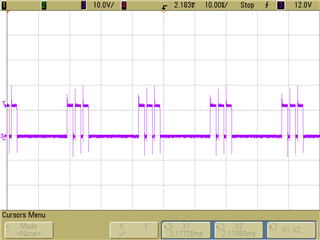Tool/software:
Hello
Please tell me.
I am currently making a charger using TPS55289.
Charging voltage 8.3V, charging current 3A
When the charging current drops below 300mA near full charge, it goes into burst mode.
Even though it is called burst mode, it oscillates for 10 seconds, then stops oscillating for 10 seconds, and repeats this.
The above phenomenon does not occur in the constant voltage mode of the electronic load.
What is the cause of this?
Is the protection circuit working?
Best regards


